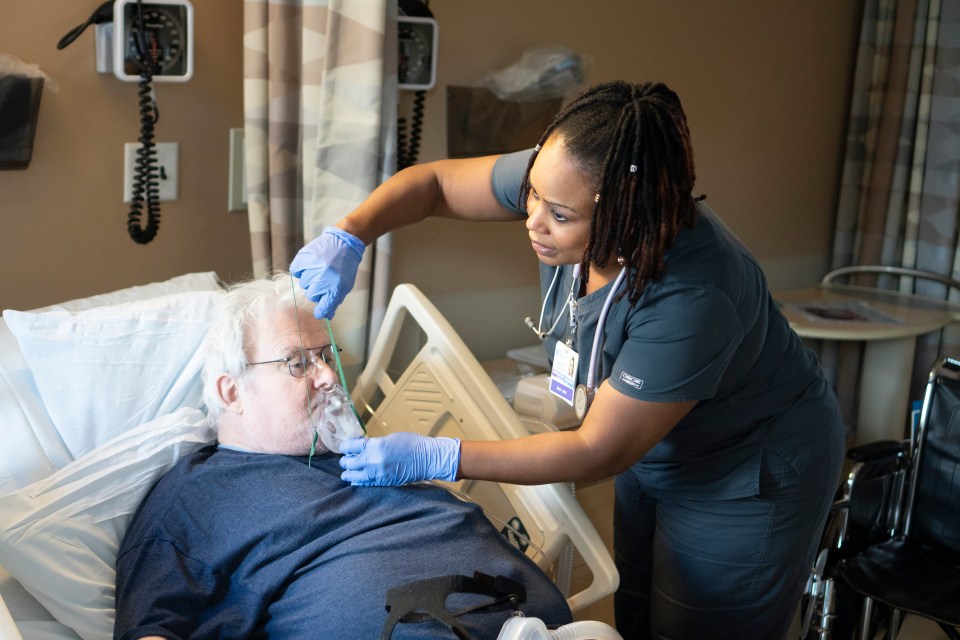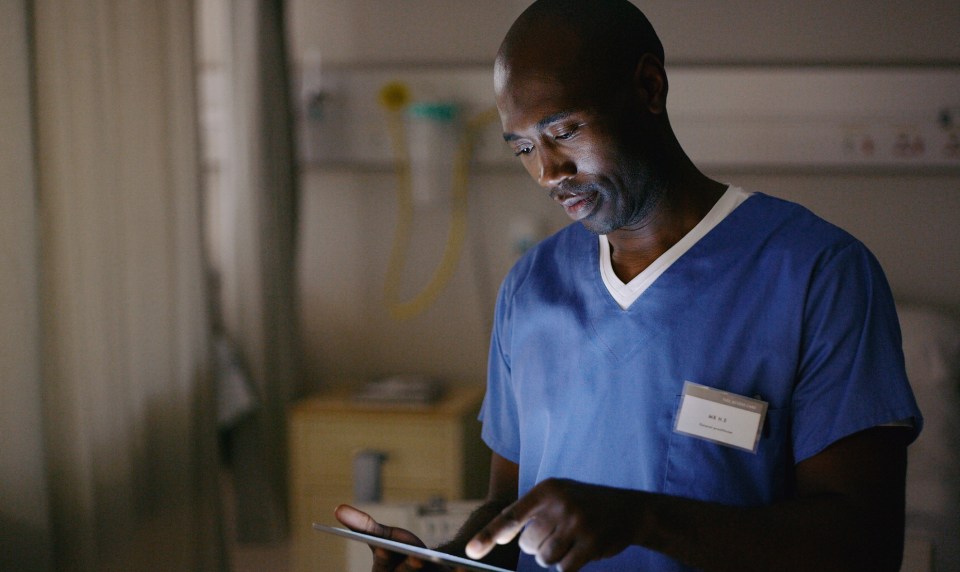Difficulty breathing, a feeling of suffocation, asthmatic complications— these are health obstacles no person hopes to face. The culprit of these systems, whether lung disease, pneumonia, respiratory illness or other condition, is first addressed in the acute care setting. Respiratory therapists (RTs) can then step in to guide patients through the healing process.
Best known for helping people breath, these clinicians are experts in lung function and the management of respiratory devices that can improve breathing function. At Encompass Health inpatient rehabilitation hospitals, RTs work closely with nurses and case managers to prepare patients for life outside the hospital, where they’ll need to be able to breath with much less support.
A crash course on respiratory devices
To alleviate breathing problems, some patients undergo a tracheostomy—the creation of an opening in the windpipe that can deliver more oxygen to the lungs than a patient can produce naturally. This procedure often happens in the emergency room or the intensive care unit in the acute care setting. For Roody Charles, a respiratory therapist at Encompass Health Rehabilitation Hospital of New England in Woburn, Massachusetts, helping patients adjust to their trach is the most challenging and rewarding part of her job.
When a patient’s trach tube is ready to be removed, RTs like Charles are there to help wean the patient off the device until they can breath independently using only their nose and mouth. If a patient has to leave the hospital with the trach tube still in place, respiratory therapists educate the patient and caregivers on how to manage the trach at home, clean and suction the device while reducing the chances of infection.
RTs also assist patients with learning to use a continuous positive airway pressure (CPAP) machine, a device that provides a steady jet of air into the lungs in order to keep the airway open. Charles spends her days fitting patients for appropriate masks and teaching them how to use the machine intermittently until they graduate to wearing the face mask overnight. It’s her way of making the machine feel less foreign and more comfortable for the user.
A career that’s close to the heart
Respiratory therapists at Encompass Health have another duty—helping patients navigate anxiety. Patients suffering from chronic obstructive pulmonary disease (COPD), a chronic inflammatory lung disease that causes obstructed airflow, experience breathlessness that can prompt an anxiety attack. RTs perform inhaler or nebulizer training and breathing exercises to help restore oxygen and calm these worries.

Michelle Pinacate, a respiratory therapy supervisor at Encompass Health Valley of the Sun Rehabilitation Hospital in Glendale, Arizona, can relate to her patients’ fears of breathlessness. She experienced pulmonary embolism (blood clots in the lungs) as a teenager. The condition inspired her to learn how the body functions. In her twenties, she discovered the field of respiratory therapy and knew it was her opportunity to help others. She started her career in an acute care hospital before joining Encompass Health.
“I knew I wanted to work in a healthy and positive healing environment,” Pinacate said. “My joy is watching patients confidently using their breathing device or maintaining oxygen saturation completely on their own. Seeing patients leave us to get back to their lives is so rewarding.”
The road to recovery
The inpatient rehabilitation setting is distinct, Pinacate says. In the acute care hospital, patients are still in the throes of their struggle. By the time they arrive at Encompass Health, the healing process has begun. She believes it’s important for therapists to understand the patient’s entire journey, including what he or she experienced before arriving at Encompass Health and what could happen when they get home.
“When our patients are preparing for discharge, they have come so far. They can smile, show gratitude and express all the emotions they couldn’t muster when they were still sick,” Pinacate says. “We are able to see the result of their perseverance.”
Charles too knows that being a cheerleader for those she treats is a responsibility not to be taken lightly. Overcoming breathing challenges and adjusting to life with a respiratory device can be overwhelming, and the expertise provided by respiratory therapists is a critical part of the care plan.
“My mission is to motivate each patient,” Charles says. “I ask myself: What steps can we take to help them achieve their goal? If we stay positive and work as a team, they can power through their recovery.”
The content of this site is for informational purposes only and should not be taken as professional medical advice. Always seek the advice of your physician or other qualified healthcare provider with any questions you may have regarding any medical conditions or treatments.



